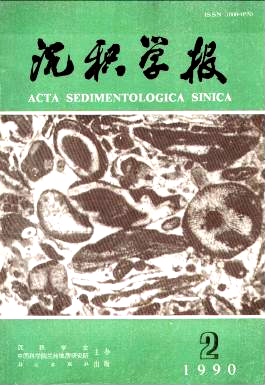DISTRIBUTIONAL AND EVOLUTIONARY CHARACTERISTICS OF THE TRI-AND TETARCYCLIC DITERPENOIDS IN MODERN MARSH SEDIMENTS
- Received Date: 1989-01-20
- Publish Date: 1990-06-10
Abstract: In this paper the authors studied characteristics of distribution and evolution of in- and tetracyclic diterpenoid compounds and their significance of organic geochemistry in modern marsh sediments from southern Gansu and Dianchi lake, Yunnan by means of GC-MBTricyclic diterpenoids detected in modern marsh sediments are pimarane, dehydroabietane, dehydroabietin, nine kindes of pimaradiene and long chain tricyciic terpane ( C19- C27) . In this paper, mass spectra of △8, 9- Sandaracopimaradiene, 13-Isopimaradiene, Isopimara-7, 15-diene compounds are first reported in China.Tricyclic diterpenoids with pimarane and abietane skeletons come from diterpenoidacrd in higher plant resins, therefore they reflect organic matter types in modern marsh sediments.Distributional types of long chain tricyciic terpanes in modern marsh sediments are similar to those in modern lake and sea water sediments. They all have reverse" V" type that C23 compound is apex in C21,. = C23 and C24 compounds, therefore distributiona characteristics of long chain tricyciic terpanes almost have not significance of indicating sedimentary environments.Tetracyclic terpanes in modern marsh sediments are composed mainly of normal tetracyclic terpanes (C23-C26), kaurane and de-A-lupane.Normal tetracyclic terpanes ha\ e distributional characteristics of step type with major peak of C26compound.This type of dis- tribution may reflect sedimentary environment of higher plant input. Kaurane come from diterpene in higher plants; de-A-lupane may is the products formed from lupenoid precursors by photochemical degradation or biochemical degradation, therefore they all are biomarker compounds of indicating higher plant input.In the early stage of diagenesis, evolution of tricyclic terpenoids is obvious.Diterpenoids of pimarane type are mainly composed of pimanthrenes and the ratio of pimanthrenes to pimarane decreases with increasing depth. These show that diagenetic products of pimarane- type diterpenoids mainly are pimanthenes formed by decarboxylation But the main type of diagenetic reaction of abietane-type diterpenoids is aromatization.That major peak of long chain tricyclic terpane remove forwards with increasing depth probably reflects that long chain tricyclic terpanes of low carbon number is the products formed from long chain tricyclic terpanes of high carbon number by biochemical degradation.
| Citation: | Duan Yi, Luo Binjie. DISTRIBUTIONAL AND EVOLUTIONARY CHARACTERISTICS OF THE TRI-AND TETARCYCLIC DITERPENOIDS IN MODERN MARSH SEDIMENTS[J]. Acta Sedimentologica Sinica, 1990, 8(2): 113-119. |






 DownLoad:
DownLoad: